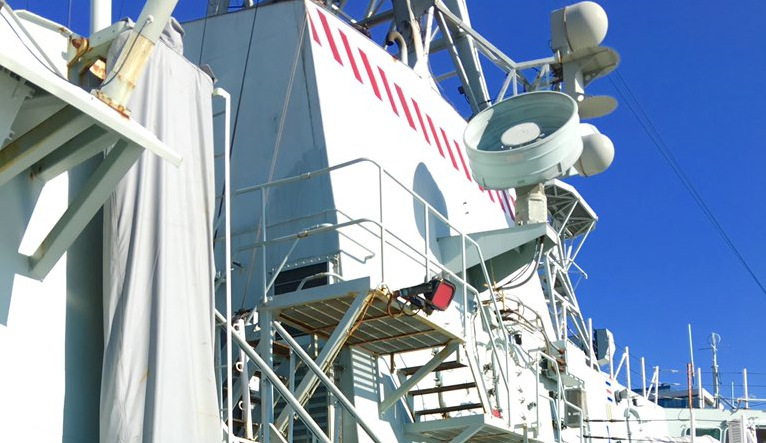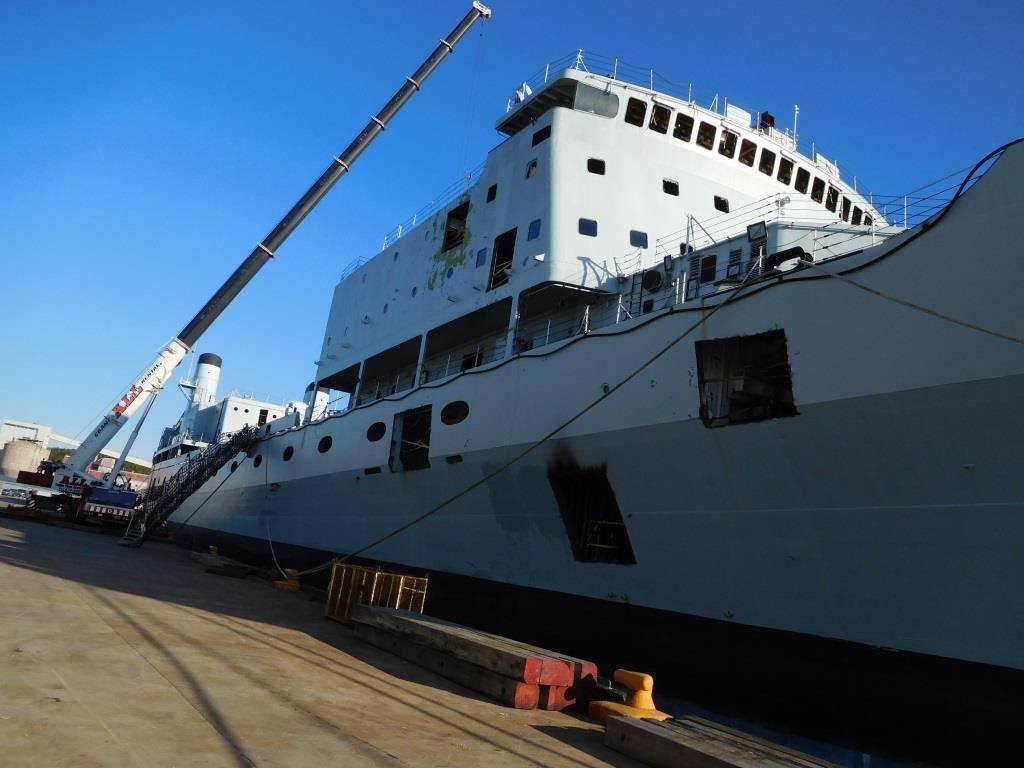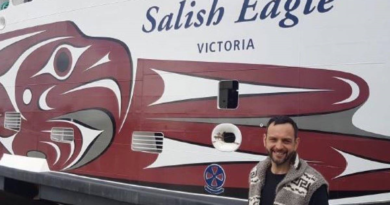The Navy’s Barber Pole
© David J. Freeman, LCdr RCN (ret’d)
Editor: Six Arctic and Offshore Patrol Vessels are being built for the Royal Canadian Navy (RCN) by the Arctic and Offshore Patrol Ship project. Four of those vessels are to be assigned to the Canadian Fleet Atlantic and home ported in Halifax. The significance of the assignment is that each vessel represents tens of millions of dollars annually to the local economy. Each Atlantic Fleet vessel will be distinguished by a customary ‘barber pole’ design on her mast or funnel. Pacific Fleet ships did not carry such distinguishing designs. The following provides background about the barber pole, and has been condensed from the author’s book “Designs of Distinction. Unofficial Insignia of the Royal Canadian Navy, 1910-1948.”
Escort Group C-3: The Barber Pole Brigade
The original Barber Pole group was Escort Group (EG) C-3. This group first developed and wore the best known RCN Escort Group insignia, the slanted red and white stripes of the barber pole. Formed in April 1942, C-3 originally consisted of the two destroyers and six corvettes.
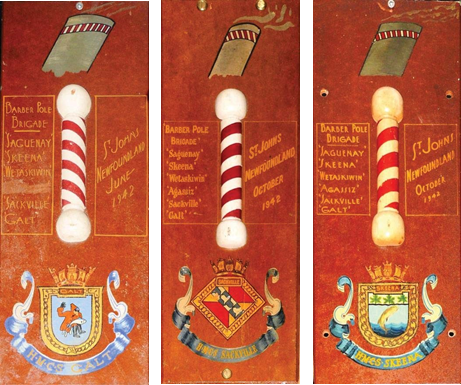
Two are dated June 1942 and two dated October 1942. Of the three depicted above,
note that the one on the left has stripes in the opposite direction to the other two.
Alan Easton, a Commanding Officer in the group from 6 April 1942, indicates the acceptance date for the barber pole device as being in early June 1942. According to Easton, his ship sailed as part of the “newly formed” group C-3 from St. John’s on 26 May and had a nine day crossing to Londonderry. On the next day, 4 June 1942, there was a meeting of the officers from the group. The junior destroyer captain, Ken Dyer, “…submitted a design for a group insignia which he said his first lieutenant had conceived.” “Since there were no other suggestions forthcoming, the design was adopted there and then.” While the location rings true, the date put forward by Easton does not agree with other evidence.
Radioman Allan Riley kept a diary which he eventually turned into a book, A Sparker’s War. In his book, his notes for October 1942 state that C-3 ships now had the barber pole. The insignia for this group apparently started with a conversation in the Crow’s Nest Club about October 1942 between the first lieutenants of the two destroyers who wanted to distinguish the ships in their group from others. They decided that a ring of red and white barber pole stripes painted around the top of the funnel would permit instant recognition. So it came to be. Photographs of the era show one destroyer wore her ring on the after funnel. As opposed to group, they referred to themselves as the Barber Pole Brigade.
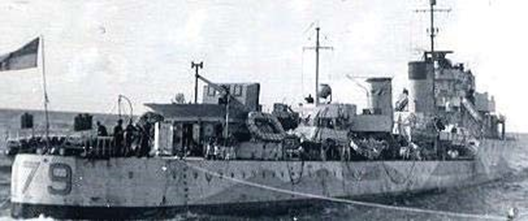
with the Barber Pole Brigade symbol on after funnel.
Escort Group C-5: The Barber Pole Group
Shortly after EG C-5 was formed in April 1943, this group adopted the barber pole emblem of C-3 and this insignia is now identified with that group. According to Admiral Ken Dyer, the C-5 senior officer “…wished to form a group identity as quickly as possible. …As there were a number of old C-3 ships or their Captains… formed in his group, he decided to have the Barber Pole symbol … carried on the funnels of his group.”
Tony Paddon was serving in the corvette Kitchener when she joined C-5 in the summer of 1943. One day that August while in port in Ireland, he was inspired to write a song about his group. In about two hours, with the assistance of Dan Hannington, they completed the song. Sung to the tune Road to the Isles, the song became an instant hit. As Tony was later to write, “…I thought no more about [my song] until we met an escort group at sea a few weeks later and passed close alongside and to my astonishment got my Barber Pole Song from all the escort’s loud hailers at full blast, a solo from each of the six or eight captains involved, in thunderous unison.”
In some instances, the red and white barber pole spirals were painted sloped to the right and sometimes, sloped to the left. This fact was queried in a March 1958 article in The Crowsnest. In the author’s opinion, this is simply a case of different ships, different painters who probably did not have a pattern to follow.
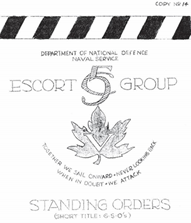
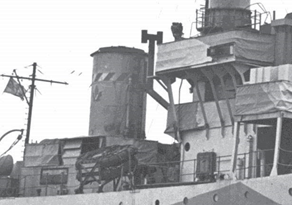
As early as September 1944, as seen in several photographs, the funnels of EG C-5 ships had a maple leaf containing the letter V, the Roman numeral for Arabic number five.
Above, the best photograph located of a vessel in EG C-5 wearing the letter ’V’ superimposed on the maple leaf as a funnel insignia, the frigate Long Branch.
David Freeman is a retired naval officer of the Canadian Armed Forces. He is the author of Designs of Distinction. Unofficial Insignia of the RCN 1910-1948, and of Canadian Warship Names.
A PDF pf this Note may be downloaded here.

